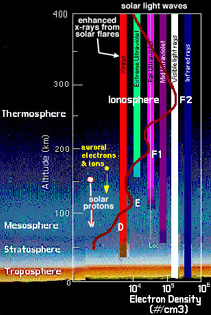If there is really a fourth dimension, where is it, and what does it look like? One possibility is that it is literally inside the mass of an object.
Does a photon have an inside, or is it flat (two-dimensional), or three dimensional? At present we think a photon is three dimensional, but one reason for its behaviour could be that it is flat. All its energy could be its momentum (its mass which is zero or almost zero) times its velocity which is the speed of light.
The earth and the solar system (the planets and the sun) are moving around the centre of the galaxy at about 220km per second. You could say they (we) are travelling in a giant ellipse. You could also say we are travelling in a straight line, which it more or less is. We are travelling is space, wich is outer space, but space is full of charges particles, electromagnetic energy and the occasional mass (star or sun).
The space inside the atom is similar. Electrons are orbiting the nucleus. Electrons are composed of like charges (all electrons share the same charge) which is determined by the charge of the protn, which has a positive charge. Electrons are then said to be negatively charged, and will flow (like water in a pipe) along a conductor (metal wire) towrds a negatice charge. Why the contradiction- (like charges repel)? It is becaue charges are concentrated at the positive point. They want to balance their energy, just as water will flow down hill or a ball bearing down a channel, due to gravity.
In an atom, an electron 'flows' around and around, due to the same gravity.
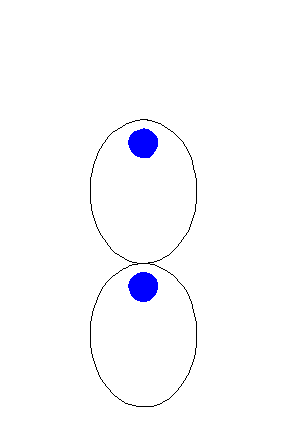
Imagine that the two blue spots are two protons, and the black circles are two fields, representing tow electrons. They (the electrons) repel each other.
Now imagine that the point where the two black circles intersect (touch) represents the path of a single electron. However it is following a path represented by the mobius below.
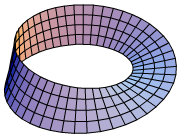
What happens, is that the electron (or ant) travels twice the distance before it completes a fill circle (than it does if the edges are joined normally.
What this is describing, is what would happen if once every second revolution of the proton, the electron was 'pushed over', or, its polarity (reference charge) changed from relatively positive to relatively negative. Thhis could happen if something was coming from inside the proton, but returning back inside, in an orbit which was partly inside the nucleus (of the proton) and partly outside it.

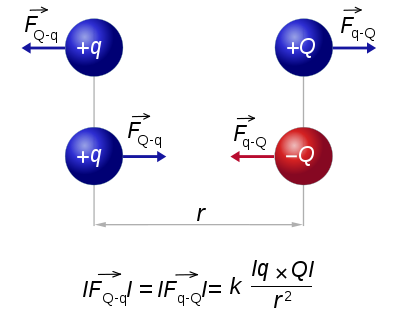
Diagram describing the basic mechanism of Coulomb's law; like charges repel each other and opposite charges attract each other.
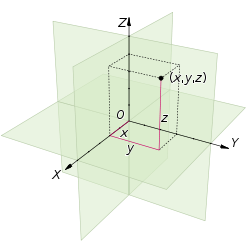
Every point in three-dimensional Euclidean space is determined by three coordinates.
All stars in the galaxy rotate around a galactic center but not with the same period. Stars at the center have a shorter period than those farther out. The Sun is located in the outer part of the galaxy. The speed of the solar system due to the galactic rotation is about 220 km/s. The disk of stars in the Milky Way is about 100,000 light years across and the sun is located about 30,000 light years from the galaxy's center. Based on a distance of 30,000 light years and a speed of 220 km/s, the Sun's orbit around the center of the Milky Way once every 225 million years. The period of time is called a cosmic year. The Sun has orbited the galaxy, more than 20 times during its 5 billion year lifetime.
The atmosphere of the earth is subject to pressure from the sun in the form of a solar wind. The quantifiable pressure has been debated, and given as approximately 14 lbs per square inch, but is likely to be much more than this.
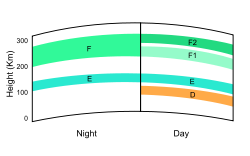
Ionospheric layers.
D layer
The D layer is the innermost layer, 60 km to 90 km above the surface of the Earth. Ionization here is due to Lyman series-alpha hydrogen radiation at a wavelength of 121.5 nanometre (nm) ionizing nitric oxide (NO). In addition, with high Solar activity hard X-rays (wavelength < 1 nm) may ionize (N2, O2). During the night cosmic rays produce a residual amount of ionization. Recombination is high in the D layer, the net ionization effect is low, but loss of wave energy is great due to frequent collisions of the electrons (about ten collisions every msec). As a result high-frequency (HF) radio waves are not reflected by the D layer but suffer loss of energy therein. This is the main reason for absorption of HF radio waves, particularly at 10 MHz and below, with progressively smaller absorption as the frequency gets higher. The absorption is small at night and greatest about midday. The layer reduces greatly after sunset; a small part remains due to galactic cosmic rays. A common example of the D layer in action is the disappearance of distant AM broadcast band stations in the daytime.
During solar proton events, ionization can reach unusually high levels in the D-region over high and polar latitudes. Such very rare events are known as Polar Cap Absorption (or PCA) events, because the increased ionization significantly enhances the absorption of radio signals passing through the region. In fact, absorption levels can increase by many tens of dB during intense events, which is enough to absorb most (if not all) transpolar HF radio signal transmissions. Such events typically last less than 24 to 48 hours.
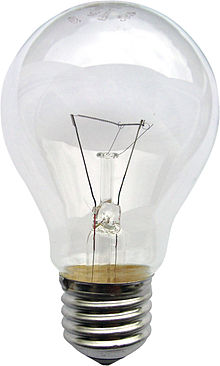
Light bulbs contain a partial vacuum, usually backfilled with argon, which protects the tungsten filament
In everyday usage, vacuum is a volume of space that is essentially empty of matter, such that its gaseous pressure is much less than atmospheric pressure.[1] The word comes from the Latin term for "empty". Physicists often discuss ideal test results that would occur in a perfect vacuum, which they simply call "vacuum" or "free space", and use the term partial vacuum to refer to an actual imperfect vacuum as one might have in a laboratory or in space. The Latin term in vacuo is also used to describe an object as being in what would otherwise be a vacuum.
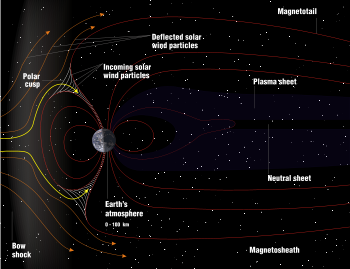
Outer space is not a perfect vacuum, but a tenuous plasma awash with charged particles, electromagnetic fields, and the occasional star.
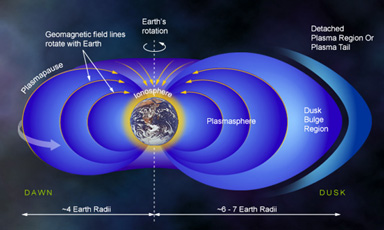
The upper atmosphere is ionized by solar radiation. That means the Sun's energy is so strong at this level, that it breaks apart molecules. So there ends up being electrons floating around and molecules which have lost or gained electrons. When the Sun is active, more and more ionization happens!
This image shows how different types of solar radiation (x-rays to
infrared radiation) penetrate into the Earth's atmosphere. It is this
solar radiation that ionizes the upper atmosphere, creating the
ionosphere.
Click on image for full size
Windows to the Universe original image
Radiation pressure is the pressure exerted upon any surface exposed to electromagnetic radiation. If absorbed, the pressure is the power flux density divided by the speed of light. If the radiation is totally reflected, the radiation pressure is doubled. For example, the radiation of the Sun at the Earth has a power flux density of 1,370 W/m2, so the radiation pressure is 4.6 µPa (absorbed).
